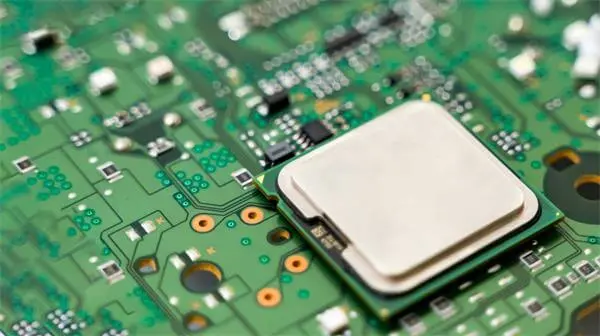
IC unlock, also known as IC decryption, refers to the process of reverse engineering a microcontroller or integrated circuit (IC) to access and possibly modify its contents. This is often done to understand the proprietary technology used in the IC, to facilitate repairs, or to enable the reproduction of obsolete parts. The primary goals and methods involved include:
What Are The Methods of IC Unlock?
Accessing Firmware and Data:
The primary purpose of IC unlock is to access the firmware or data stored within the IC. This information is usually protected and not readily accessible due to the manufacturer’s security measures aimed at protecting their intellectual property.
Understanding Circuit Operation:
Engineers and technicians may perform IC unlock to study how a particular IC functions. This can be crucial for educational purposes, compatibility analyses, and creating system enhancements.
Facilitating Repair and Modification:
In some cases, especially where equipment needs to be repaired or modified, and the original components are no longer available, IC unlock can be necessary to allow for the creation of compatible replacements or upgrades.
Circumventing Security Feature:
Although controversial and often illegal, IC unlock can be used to bypass the security features of an IC. This aspect raises significant ethical and legal concerns, particularly in contexts where such actions violate copyright or other intellectual property laws.
Software-Based IC Unlock Methods

We using software-based methods to unlock programmed integrated circuits (ICs) is a sophisticated approach that can often be done without physically damaging the IC. This technique typically involves the following aspects:
Firmware Dumping:
This method involves using software tools to communicate with the IC’s onboard firmware. The software exploits known vulnerabilities or standard communication protocols to extract the firmware. This is often done through interfaces like JTAG (Joint Test Action Group), SPI (Serial Peripheral Interface), or I2C (Inter-Integrated Circuit).
Reverse Engineering Software:
After the firmware is extracted, specialized software is used to analyze the machine code. This reverse engineering can help understand how the IC operates, what data it processes, and how it interacts with other hardware components. Tools like IDA Pro, Ghidra, and Radare2 are commonly used for such purposes.
Cryptographic Attacks:
If the data or firmware on the IC is encrypted, software methods can be employed to crack the encryption using techniques such as brute force attacks, dictionary attacks, or other cryptographic attack methods. These processes are computationally intensive and are carried out by powerful computers or distributed networks.
Advantages of Software-Based IC Unlock

Features of software-based
- Non-Destructive
One of the biggest advantages of using software to unlock ICs is that it is non-invasive and non-destructive. Unlike physical decapsulation or probing, which involve physical alterations to the IC, software-based methods leave the hardware intact.
- Cost-Effective
Since there is no need for sophisticated lab equipment and the risk of damaging the IC is minimal, software-based unlocking can be more cost-effective, especially when dealing with large volumes of ICs.
- Repeatability
Software-based methods can be standardized and repeated across similar types of ICs without additional costs or risks, making them ideal for large-scale operations.
Ethical and Legal Considerations
As with any form of IC unlock, it’s crucial to consider the legal and ethical implications of using software to bypass security on ICs. This includes respecting copyright laws, adhering to software licensing agreements, and ensuring that the actions comply with local and international laws concerning reverse engineering. The use of such technology should be justified, such as in situations involving device repair, data recovery, or security research within legal boundaries.
Preventative Measures
To prevent unauthorized IC unlocks, manufacturers often employ various security measures:
- Tamper-proofing
Physical security measures such as tamper-evident seals or tamper-resistant packaging can deter physical tampering.
- Encryption and Security Keys
Encrypting the data on the IC and using secure boot mechanisms that verify the integrity of the firmware on startup can prevent unauthorized software modifications.
- Hardware Security Modules (HSM)
Employing HSMs or dedicated security chips can provide robust defence mechanisms against both physical and software attacks.
Detecting an IC unlock involves a combination of technical inspections and monitoring for anomalies in performance or behaviour. The effectiveness of detection methods depends heavily on the sophistication of the security measures implemented by the IC manufacturer and the techniques used by the person attempting the unlock.
What Are The Costs Involved in IC Unlock Services?

The costs involved in IC unlock services can vary widely based on several factors, including the complexity of the IC, the level of security features, the methods used for unlocking, and the purpose of the unlock. Here are the key components that influence the pricing of IC unlock services:
Types of IC
Different ICs have different levels of complexity and security features. Simpler microcontrollers might be less expensive to unlock compared to advanced microprocessors or custom ASICs (Application-Specific Integrated Circuits). The more complex the architecture and the newer the technology, the higher the cost.
Security Features
ICs with advanced security features such as encryption, tamper resistance, and other protective measures require more sophisticated and time-consuming approaches to unlock. Overcoming these security measures can significantly increase the cost due to the specialized equipment and expertise required.
Typical Costs
Costs can range from a few hundred to several thousand dollars per IC, depending on the factors mentioned above. Our ic unlock services include one or two programmed ic samples for your testing first; once you pass the tests, we will send you the BIN or HEX file as close the project. Initial assessments or consultations are often provided to estimate the full costs more accurately before proceeding with the unlock service.
Understanding these cost factors is crucial for anyone considering IC unlock services, ensuring they are prepared for the potential financial investment required based on their specific needs and the characteristics of the ICs involved.




